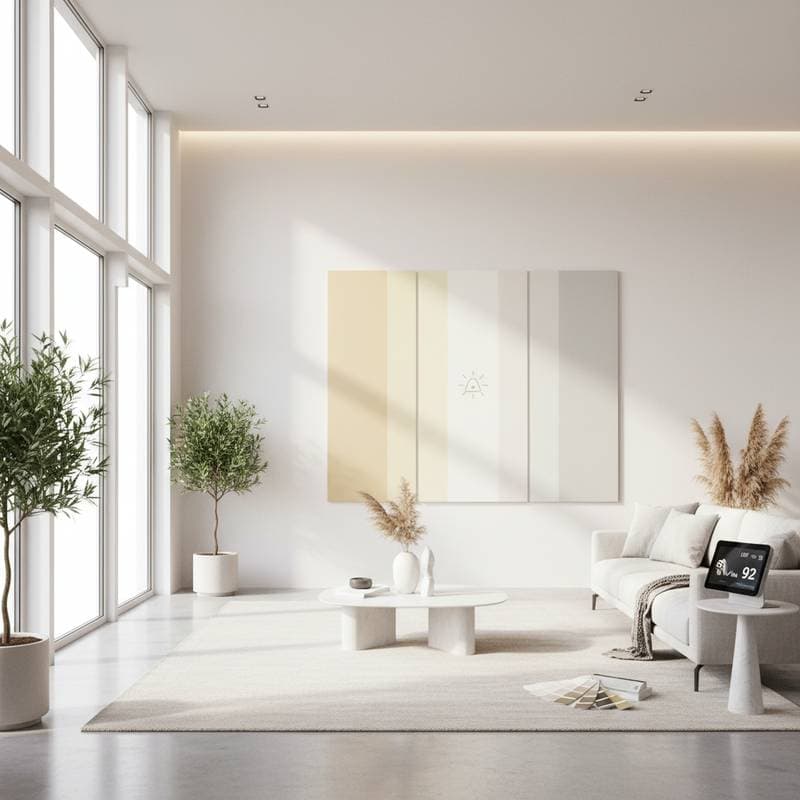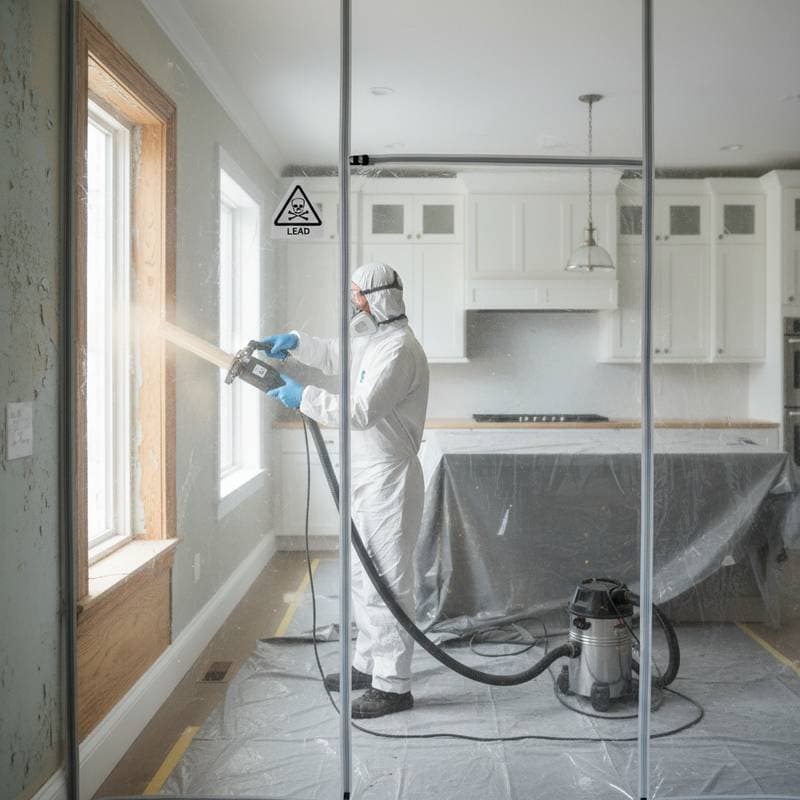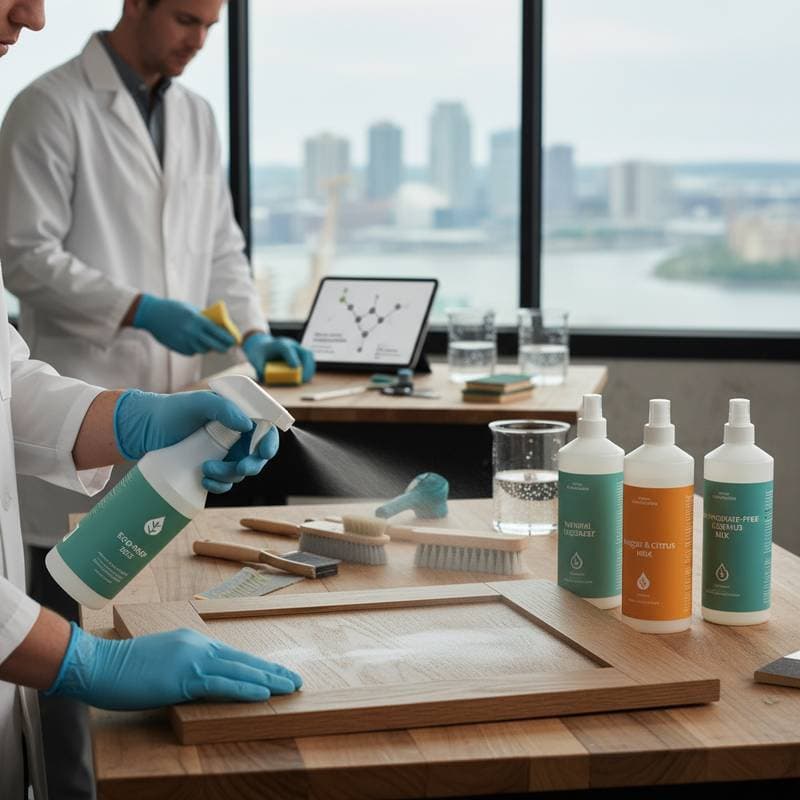Why Limewash Paint Costs Three Times More but Endures for Decades
Homeowners evaluating exterior finishes frequently weigh traditional acrylic paint against limewash paint. Limewash appears costly at first, typically three times the price of standard paint. However, this upfront expense delivers enduring durability, natural elegance, and a finish that persists for decades. Grasping the elements that elevate limewash costs, its distinctions from ordinary paint, and the substantial value it provides equips you to decide wisely for your upcoming project.
Limewash Paint Cost Overview
Limewash paint installation generally spans $8 to $15 per square foot, with many homeowners settling at about $12 per square foot for a professional application on a typical residence. Traditional acrylic or latex exterior paint, in contrast, runs $2.50 to $5 per square foot when installed.
Thus, limewash demands roughly three times the initial outlay, yet its advantages surpass mere aesthetics. It provides extended service life and distinctive protective attributes.
Average Cost Ranges by Project Size
- Small home exterior (1,000 sq. ft.): $8,000 - $15,000
- Medium home exterior (2,000 sq. ft.): $16,000 - $30,000
- Large home exterior (3,500 sq. ft.): $28,000 - $52,500
Cost Breakdown per Square Foot
Limewash averages $8 to $15 per square foot, encompassing:
- Materials: $2 - $5 per square foot
- Labor: $5 - $8 per square foot
- Surface preparation: $1 - $2 per square foot
- Additional factors: $1 - $3 per square foot, varying with project demands
Factors Affecting Limewash Paint Costs
Multiple components shape the total expense of a limewash endeavor. Consider these primary influences when soliciting bids.
Surface condition: Limewash adheres best to mineral-based substrates like brick, stucco, or stone. Extensive cleaning, patching, or restoration can inflate preparation expenses by thousands.
Application technique: Limewash demands layered coats with precise drying intervals. This labor-intensive method exceeds the simplicity of applying acrylic paint via roller.
Material sourcing: Genuine limewash derives from lime putty matured over months or years. Such production and scarcity elevate material prices.
Project size and access: Expansive properties or sections with challenging reach, such as elevated gables or chimneys, necessitate extra scaffolding and time.
Finish style: Preferences for aged patina versus fuller opacity dictate varied techniques and curing approaches.
Detailed Cost Analysis by Quality Level
| Category | Basic Range | Standard Range | Premium Range | Key Differences |
|---|---|---|---|---|
| Materials | $2 - $3 | $3 - $4 | $4 - $5 | Higher purity lime and natural pigments |
| Labor | $5 - $6 | $6 - $7 | $7 - $8 | Premium includes skilled artisans for custom finishes |
| Prep Work | $1 | $1 - $1.50 | $1.50 - $2 | Premium prep includes masonry repair and deep cleaning |
| Additional Factors | $1 | $2 | $2 - $3 | Complex detailing, trims, or special textures |
Why Limewash Costs More Than Regular Paint
Limewash transcends a mere surface layer. It forms a chemical bond with masonry, yielding a permeable barrier that fortifies the underlying material progressively. This demands thorough material readiness, expert workmanship, and successive coats.
Conventional paint, alternatively, forms a synthetic film atop the surface. Application proves economical, but vulnerabilities to peeling, cracking, and fading necessitate repaints every seven to ten years. Limewash endures for multiple decades, often requiring only sporadic maintenance, which justifies the elevated initial cost.
Value and Long-Term ROI
Limewash exacts a greater preliminary sum, but its return materializes over extended periods. Envision repainting with acrylic every ten years. Across three decades, three complete applications might aggregate to match or exceed one limewash treatment.
Limewash yields further merits:
- Durability: It solidifies progressively, withstanding elemental exposure.
- Breathability: Moisture escapes freely, averting mold and structural compromise.
- Aesthetic appeal: The evolving patina imparts enduring charm, enhancing property worth.
Money-Saving Strategies for Limewash Projects
- Handle basic prep yourself: Clear surfaces and adjust landscaping prior to crew arrival to trim labor duration.
- Opt for a simpler finish: Elaborate textures or layered colors escalate expenses. A basic two-coat process remains budget-friendly.
- Time projects for off-peak seasons: Reduced demand in quieter months can yield favorable rates.
- Combine related tasks: Incorporate interior masonry or accessory structures into a single agreement to diminish per-square-foot charges.
- Uphold surfaces diligently: Routine limewash renewals prove simpler and less costly than comprehensive redoing.
Planning Your Budget
Approaching limewash budgeting differs from standard paint planning. View it as a singular, long-lasting commitment spanning decades, and allocate accordingly.
- Solicit multiple quotes from limewash-savvy contractors.
- Incorporate contingencies, typically 10 to 15 percent of the total, to address unanticipated repairs.
- Emphasize quality above savings, as flawed execution undermines limewash advantages.
- Assess lifecycle expenses, dividing overall cost by projected durability to reveal the effective yearly outlay.
For numerous owners, limewash annualizes lower than traditional options across its lifespan.
Frequently Asked Questions
1. What is the average cost of limewash paint compared to traditional paint?
Limewash installation spans $8 to $15 per square foot, whereas acrylic or latex paint averages $2.50 to $5 per square foot. This positions limewash at approximately three times the upfront cost, though its prolonged service reduces future needs.
2. What factors have the biggest impact on limewash paint costs?
Surface state, application intricacy, material origins, and project scale exert the greatest influence. Repairs to masonry, elevated work, or detailed elements can append thousands to the total.
3. How can I save money on limewash paint without sacrificing quality?
Manage minor preparations independently, select straightforward styles, align with slower seasons, and consolidate tasks. Periodic maintenance prolongs efficacy economically.
4. Should I hire professionals or attempt limewash as a DIY project?
Materials exist for purchase, yet proper execution hinges on expertise in timing, climate, and prep. Professionals ensure uniformity and longevity; DIY efforts risk inconsistencies and brevity.
5. How do I budget for unexpected costs in a limewash project?
Reserve 10 to 15 percent of the estimate as a buffer. This accommodates surprises like repairs, thorough cleansing, or extra layers due to absorption variances.
6. When is the best time to start a limewash project for the lowest costs?
Spring and late autumn often see lighter schedules, potentially lowering fees. Mild, dry weather proves essential for optimal bonding and curing.
Securing Lasting Protection and Elegance
Mastering limewash paint costs and benefits empowers homeowners to weigh initial investments against generational rewards. Though pricier at outset, limewash delivers resilient safeguarding and classic allure that elevates and preserves residences enduringly.



